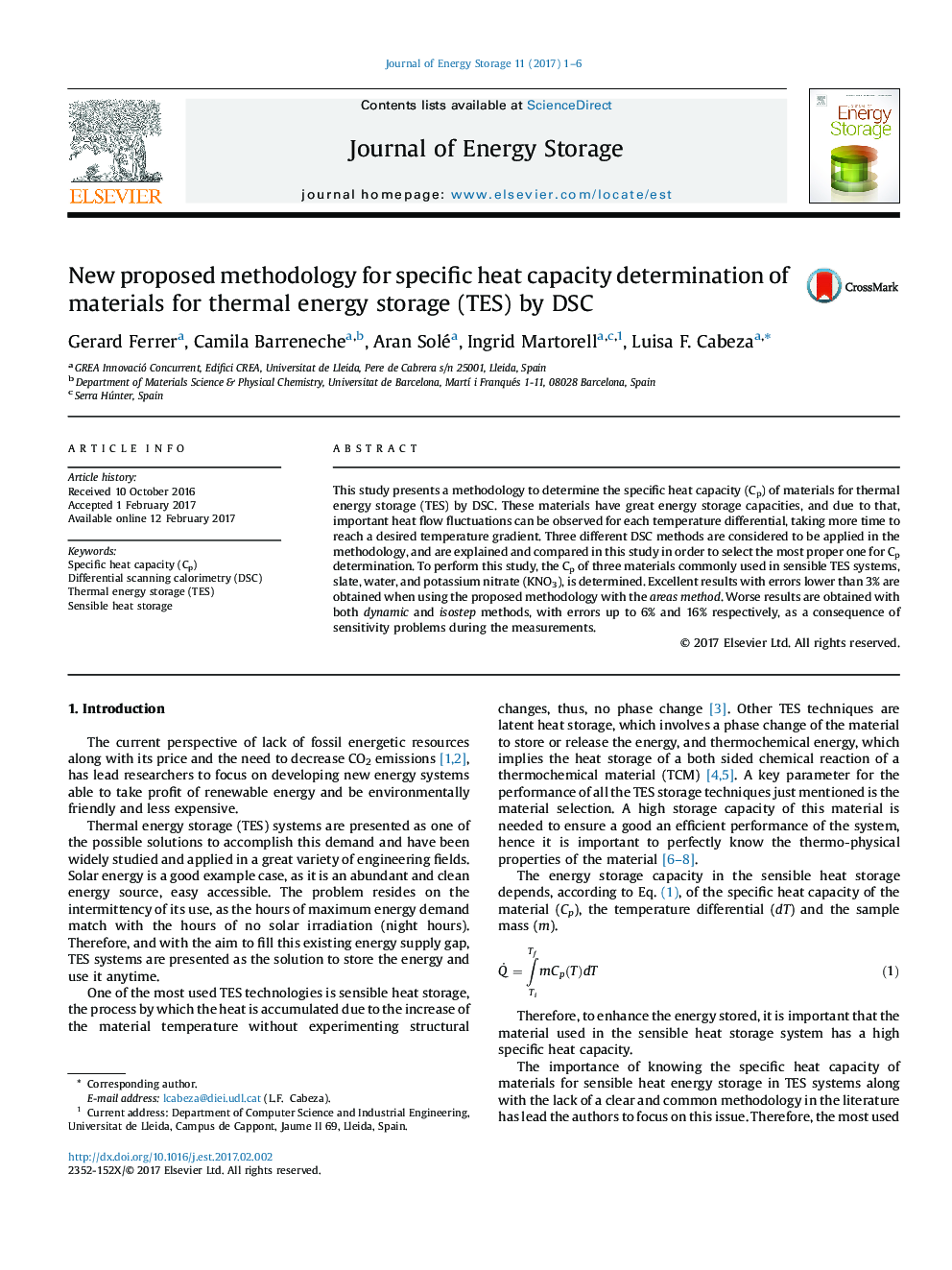| Article ID | Journal | Published Year | Pages | File Type |
|---|---|---|---|---|
| 5127260 | Journal of Energy Storage | 2017 | 6 Pages |
â¢A new methodology for Cp determination of materials for TES is proposed.â¢Three DSC methods were tested using water, slate and KNO3 as study materials.â¢Errors lower than 3% have been obtained using this methodology.â¢The areas method is the best DSC method for this methodology.
This study presents a methodology to determine the specific heat capacity (Cp) of materials for thermal energy storage (TES) by DSC. These materials have great energy storage capacities, and due to that, important heat flow fluctuations can be observed for each temperature differential, taking more time to reach a desired temperature gradient. Three different DSC methods are considered to be applied in the methodology, and are explained and compared in this study in order to select the most proper one for Cp determination. To perform this study, the Cp of three materials commonly used in sensible TES systems, slate, water, and potassium nitrate (KNO3), is determined. Excellent results with errors lower than 3% are obtained when using the proposed methodology with the areas method. Worse results are obtained with both dynamic and isostep methods, with errors up to 6% and 16% respectively, as a consequence of sensitivity problems during the measurements.
Graphical abstractDownload high-res image (74KB)Download full-size image
